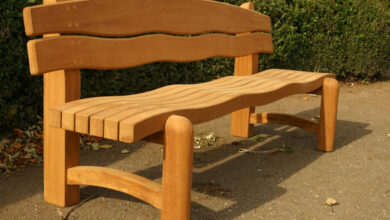How to Choose the Right Indoor Pool Design

Indoor swimming pools, once a luxury, are increasingly becoming a popular feature in residential and commercial properties. The allure of an indoor pool lies in its accessibility and usability regardless of season or weather. This guide provides a detailed approach to selecting the right indoor pool design, balancing functionality, aesthetics, and practical considerations.
Understanding Space Requirements:
The size and shape of an indoor pool are dictated by available space and intended use the residential pools typically range from 8 x 15 feet to 20 x 40 feet. Commercial pools may be larger, accommodating more users. Consideration should also be given to surrounding space for amenities such as changing areas, lounging spaces, and equipment storage.
Ventilation and Humidity Control:
Proper ventilation is crucial in an indoor pool setting to manage humidity and condensation, which can lead to structural damage and unhealthy air quality. Options include mechanical dehumidifiers, air handling units, and natural ventilation methods. The choice depends on the pool’s size, location, and budget.
Heating Solutions:
Heating an indoor pool involves maintaining a comfortable water temperature and ambient air temperature. Options include gas heaters, electric heat pumps, and solar heating systems. The selection should align with energy efficiency goals and local climate conditions.
Aesthetic Considerations:
The aesthetic of an indoor pool should complement the overall design of the property. Options include traditional rectangular designs, free-form naturalistic pools, and modern, minimalistic styles. Materials like glass tiles, natural stone, and innovative lighting can enhance the pool’s visual appeal.
Maintenance and Safety:
Indoor pools require regular maintenance to ensure water quality and safety. Automated chemical feeders, robotic cleaners, and UV sanitation systems can reduce maintenance effort. Safety considerations include slip-resistant flooring, adequate lighting, and pool covers.
Budget and Cost Implications:
The cost of an indoor pool varies widely based on size, materials, and additional features like spas or waterfalls. Operational costs, including heating, ventilation, and maintenance, should also be factored into the budget.
FAQs:
Q1: What are the optimal dimensions for a residential indoor pool?
- The ideal size for a private indoor pool relies upon the accessible space and the mortgage holder’s necessities. Normally, sizes range from 8 x 15 feet for minimal pools to 20 x 40 feet for additional roomy choices. It’s fundamental to likewise represent extra space around the pool for conveniences like relaxing regions and evolving rooms.
Q2: How do I choose the right ventilation system for my indoor pool?
- Choosing the suitable ventilation framework is pivotal to oversee dampness and guarantee air quality. The decision relies upon the pool’s size and the neighbourhood environment. Choices incorporate mechanical dehumidifiers, air taking care of units, and normal ventilation strategies. An expert air conditioning specialist can give custom-made suggestions in view of explicit necessities.
Q3: What are some popular aesthetic designs for indoor pools?
- Indoor pools can fluctuate extraordinarily in plan, from customary rectangular shapes to freestyle or present day, moderate styles. The plan ought to supplement the generally speaking building style of the property.
Q4: What should be considered in terms of maintenance and safety for an indoor pool?
- Ordinary upkeep is fundamental to keep up with water quality and wellbeing. This incorporates pH adjusting, cleaning, and guaranteeing appropriate filtration. Mechanised frameworks can assist with facilitating the support trouble.
Conclusion:
Picking the right indoor pool configuration requires cautious thought of room, environment control, style, and financial plan. By tending to these key variables, proprietors can guarantee a useful, wonderful, and charming indoor swimming experience.




